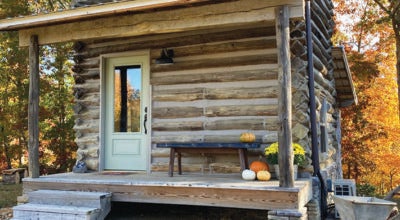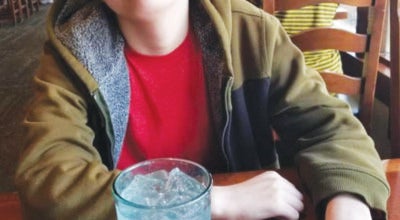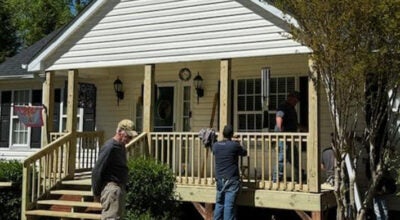The Literary Corner:Renegade Writer’s Guild
Published 3:57 pm Wednesday, October 5, 2022
|
Getting your Trinity Audio player ready...
|
Raising Monarch Butterflies
By David R. Moore
A neighbor provided me with milkweed seed three years ago, which I planted in my flower bed. That year I noticed an increase in visitation by monarch butterflies to my flower garden, checking out the milkweed and nectarous zinnias. I spotted Monarch caterpillars on the milkweed, but after some point, they disappeared. I was uncertain if a predator got them or if they crawled off to form a chrysalis, although I never found any.
I planted another variety of milkweed plants to my flower bed (obtained from a garden sale at Tanglewood Park) this year. I also raised milkweed in several 12-inch pots from seeds I collected from plants last summer. Monarch butterflies (on their southern migration) started visiting my milkweed and zinnias in late August. Although I looked, admittedly not every day, it surprised me to find large monarch caterpillars on the milkweed. I do not know how I did not see them when they were smaller. I transferred them to a butterfly cage containing one of my growing milkweed pots.
The caterpillars feed on milkweed leaves constantly and grow through molts called instars. The five caterpillars I transferred stripped all the leaves of the milkweed plants in the pot. After that, I cut leaves from other milkweed plants and added them to the cage to keep the caterpillars fed.
At last, they climbed and attached themselves to the top of the cage with a silk button. There they would hang in “J” shape for 14 to 20 hours. Then in less than two minutes, they undergo their final molt and transform into a chrysalis. Unfortunately, I have not observed this last transformation, but I did find a chrysalis hanging in the place of the caterpillar.
After about two weeks, the green chrysalis becomes transparent, and the Monarch emerges. It takes several hours for the butterfly to dry its wings and gather strength, but finally, with a flutter of wings, the Monarch butterfly takes to the sky and continues the southern migration.
Moonshining
By E. Bishop
I wonder, does every Southern family have a moonshine story to tell? Well, we do and I’m going to attempt to tell it through the reminiscing of our family storyteller.
But, first a little history on moonshining. According to an article in the Moonshiner 28, moonshining was still quite prevalent in the South in the 1940s, 50s and early 60s. Between 1954 and 1964, more than 72,000 stills were destroyed by federal agents in North Carolina and five other Southern states. There are many legendary moonshiners, even one from North Carolina that forged the path to NASCAR racing. Moonshine aliases can be rotgut, branch water, white lightnin’, hooch, skull cracker, stump, risen’shine among others. Likker makin’ still goes on (some even legally now), just not as much. Is it because of the rebel spirit of the South or the love of good ol’ corn whiskey?
“You know, our family moved down here in l944 so this happened sometime after that. He didn’t have nothing to ride in and it was just an old dirt trail out from the house to the tobacco barn. He’d go out there, fire the tobacco barn at night, stay with it, sleeping on an old cot; then, early in the morning, he’d come back to the house and eat breakfast and farm all day.
“Well, one night daddy kept hearing a racket in the woods all night long. Next morning, just about daylight, the law come in on him, arrested him, said he’d been making liquor down on the river. Said he didn’t know nothing about no still; they said “we know it’s yours; was told it was yours; going to arrest you and take you to jail!”
“At that time, just a field, no road, leading to the river like it is now. So they walked down beside that field to the river and sure enough there was a still. It had done been cleaned out though. Daddy got to looking around and seen these big ol’ footprints. He knowed soon as he seen ‘em who it was and what she’d done. She must’ve had a rowboat, or something, and had oared that thing up the river with a pole; had done run that whiskey off, had left with it and done gone!
“Revenuers said “we know it wasn’t you ‘cause we watched you all night; we should’a been down here watching this.” Took the handcuffs off daddy, told him he was free to go and tore up the still. Daddy said “told you it wasn’t me.” They said “you just go back to your business.”
“And daddy, he fired the tobacco barn back up again, went to the house and eat his breakfast and decided to go on back to farming like he’d been a-doing every day. He worked ’til dinnertime, come in at dinner and he knowed, he knowed who done it, who it was ‘cause he’d seen them footprints and tracks. So, after he ate, he just went down to that farm where she lived; back down there behind the barn, back down in the woods there and called her out and told her what he’d witnessed and seen. She said “oh, lawd, what, what, what’s gonna happn’ now.
“Daddy said ain’t nothing gonna happen. Said they don’t know who it was, you don’t go back up there and they won’t know. Said they tore your still up so ain’t no need to go back for nothing. And so, daddy come on back home and that was sort of the end of that tale.”
Hurricane Season
By Linda H. Barnette
When the weather forecasters start talking about hurricanes, my mind goes back to two of those storms that affected my life in some way.
In October of 1954 my parents drove my aunt and uncle, Edna and Henry Shoaf to Clearwater, Fla. for the wedding of their older son, Henry Shoaf Jr.to his fiancée Mary. The trip itself was very long and boring, and there were only two-lane roads then. As we got closer and closer to Florida, we noticed that the sky had a very peculiar purple color and wondered why. However, it was only after we returned home that we found out that Hurricane Hazel had come ashore near the border of North and South Carolina and had caused the death of at least 19 people in NC and had destroyed many beachfront properties in both Carolinas. It rained so much here that school dismissed early.
The other memorable hurricane to affect this area was Hurricane Hugo in September of 1989. This time we all knew it was coming ahead of time and were able to make preparations. Yet the severity of the storm was still shocking and very scary. I recall waking up at 4:30 in the morning to howling wind and swaying trees. My son and I went over to the Stroud house next door and called my mother, who was alone except for her dog, Lucky. We did not have any real damage, but my husband John recalls being without power at his home for nearly 2 weeks.
It is interesting to note that both Hazel and Hugo made landfall in the same general area, although Hugo was farther south. There was again tremendous property damage, especially in SC, where the storm destroyed many homes and 13 people died.





